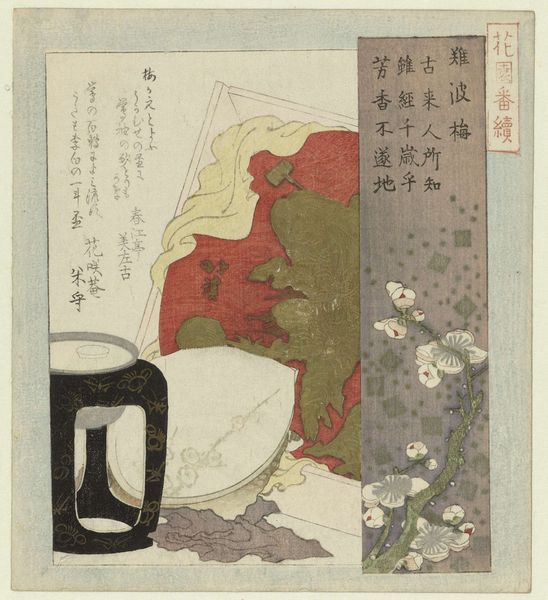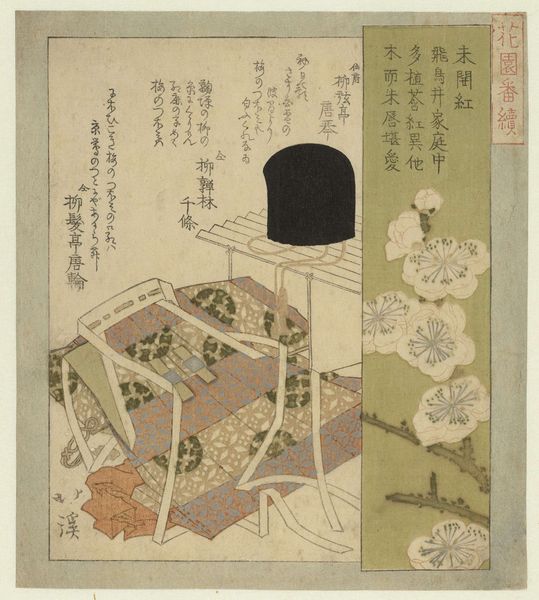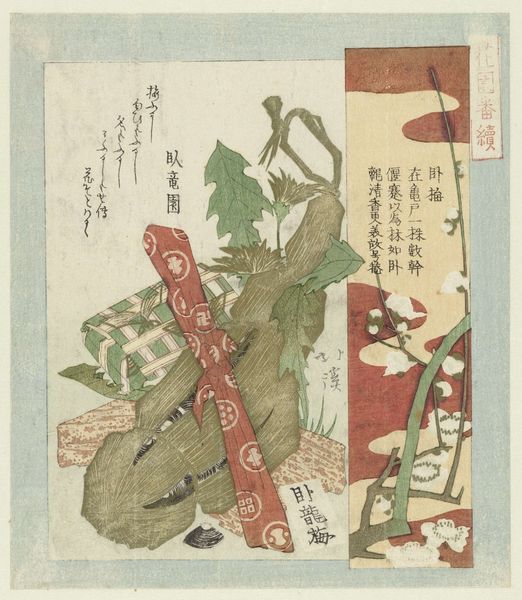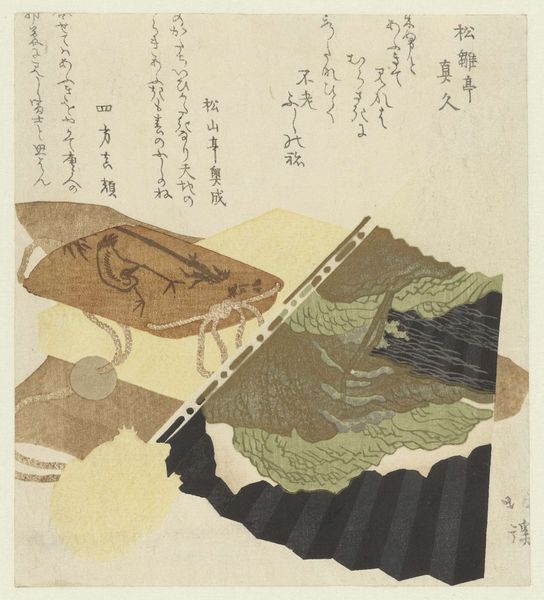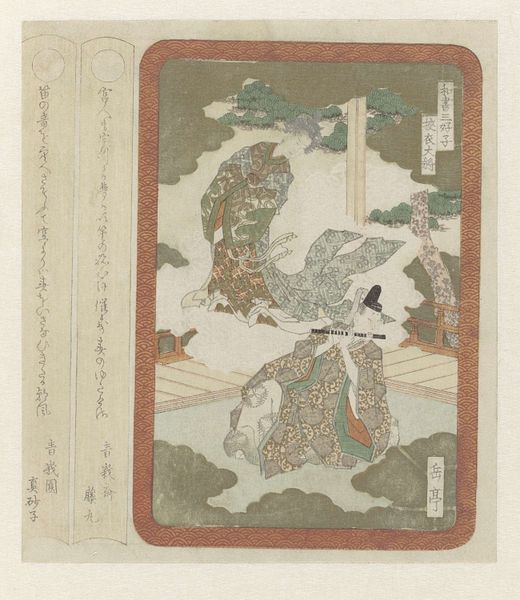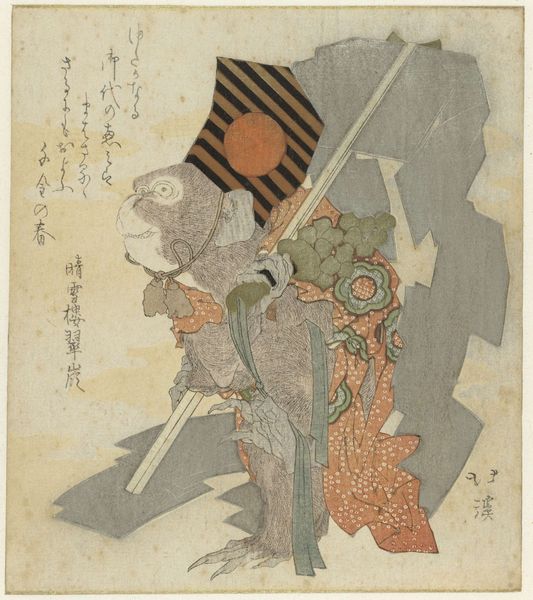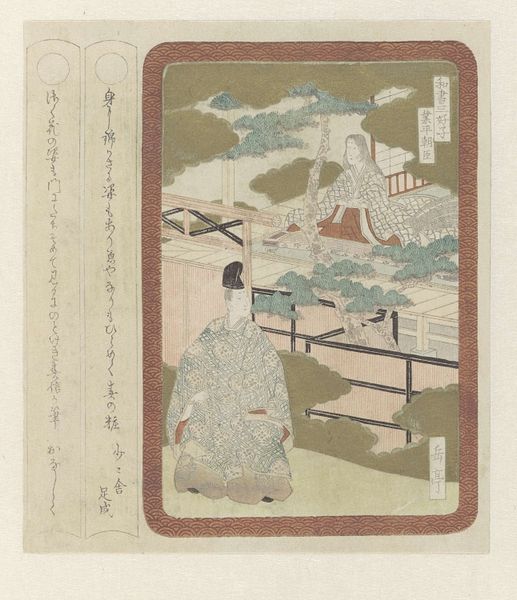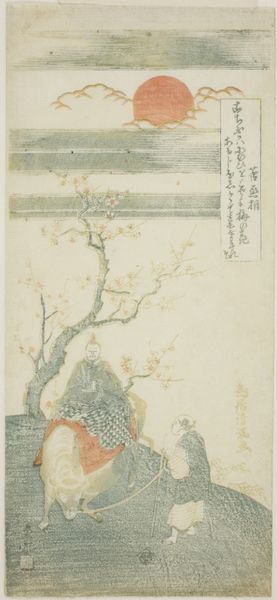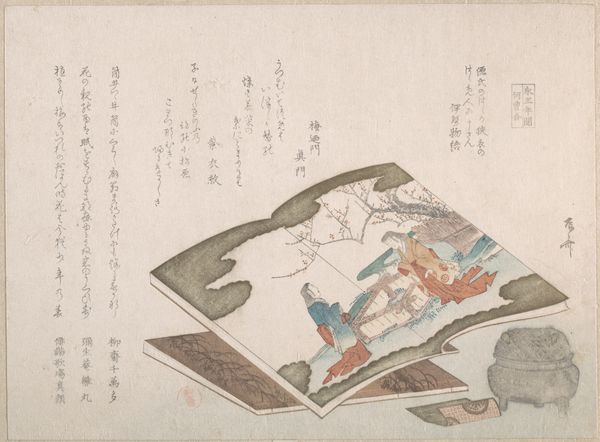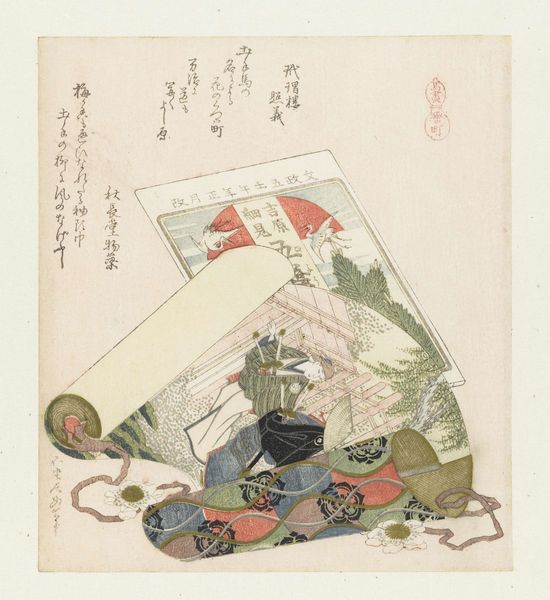
print, paper, woodblock-print
#
water colours
# print
#
ukiyo-e
#
paper
#
woodblock-print
#
line
Dimensions: height 200 mm, width 175 mm
Copyright: Rijks Museum: Open Domain
Curator: Let's turn our attention now to "Plum Blossoms from Osaka," a lovely woodblock print created by Totoya Hokkei in 1823. I'm drawn to its intimate scale. What's your first impression? Editor: Intimate, certainly. I notice that despite its delicate portrayal of nature, there’s almost an interior stillness to it. It’s like a stage setting, with the objects carefully placed as props, all hinting at something just beyond our view. Curator: Hokkei, deeply embedded in the artistic circles of his time, situated this piece within the vibrant ukiyo-e tradition, a movement deeply invested in depicting the fleeting pleasures and fashionable life of the Edo period. Prints like this weren't just art; they were reflections of and commodities within a burgeoning urban culture. Editor: Absolutely. Knowing this was created in a moment of relative peace and prosperity definitely changes how I look at it. The careful placement, the inclusion of poetry… it's all meant to cultivate a certain ideal, isn’t it? To project a sense of refinement and cultural status? And to whose benefit? Who was afforded this idealized vision? Curator: Indeed, Hokkei cleverly utilizes the conventions of the still life. Notice the meticulous detail in rendering the plum blossoms and the geometric background. It creates a kind of tension between the natural world and the manufactured. But even this tension has to be seen as reflecting socio-cultural values. Editor: Right, this contrast between natural forms and geometric pattern—a symbol of order—feels so central to this piece. I think the squares, while they appear as abstract adornment, symbolize social constraints on something as delicate as these cherry blossoms. It reminds me how the aestheticization of nature is always deeply tied to the social constructs and even power dynamics that underpin it. It's pretty to look at, but what else is at play? Curator: Exactly. Through careful visual analysis and historical understanding, Hokkei’s "Plum Blossoms from Osaka" invites a much richer dialogue about artistic practice. Editor: And it calls for an intersectional look at class and cultural production. Even a seemingly innocuous depiction of flowers contains layers of complex narratives that we can only start to access by contextualizing.
Comments
No comments
Be the first to comment and join the conversation on the ultimate creative platform.
